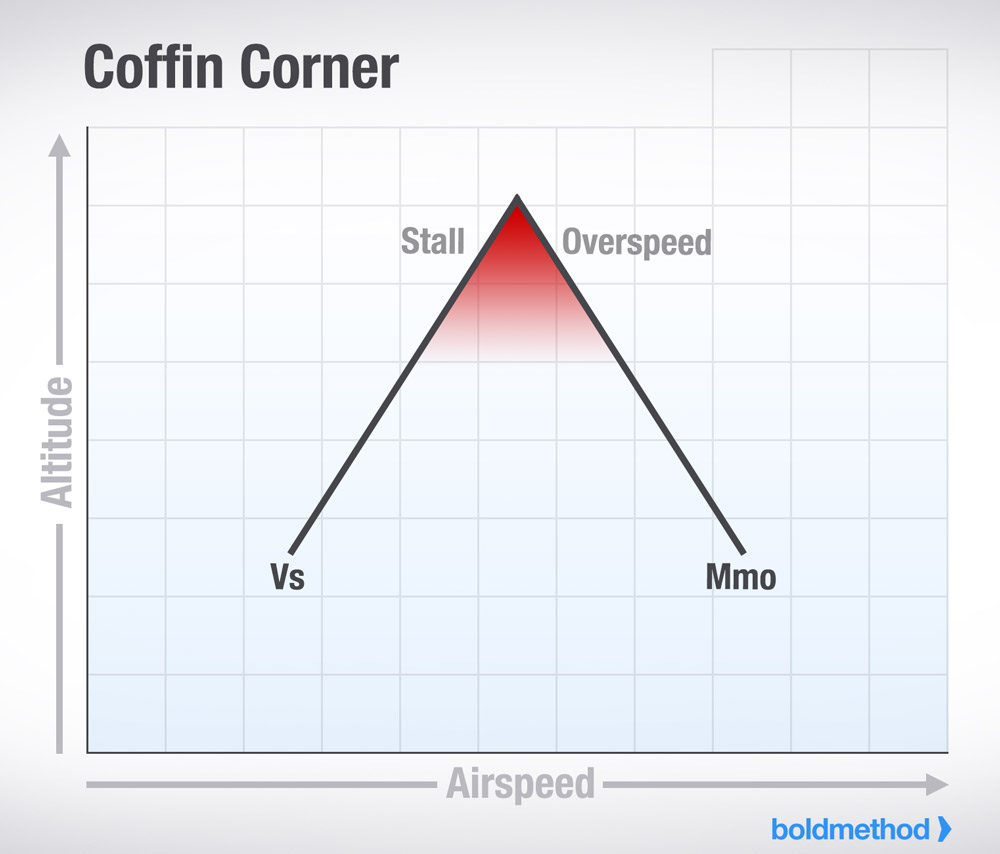2020: General Aviation’s Coffin Corner?
 In aviation “coffin corner” is where bad things come together. I learned the term long ago, reading about the U-2, in Francis Gary Power’s book, if I remember correctly. When flying at the upper edge of its envelope, a single digit separated the redline speed that could pull the wings off the fragile bird, and the stall speed, the minimum velocity needed for those wings to produce lift. While I understand the aerodynamics involved, the concept of flying with so little margin for error still boggles my mind.
In aviation “coffin corner” is where bad things come together. I learned the term long ago, reading about the U-2, in Francis Gary Power’s book, if I remember correctly. When flying at the upper edge of its envelope, a single digit separated the redline speed that could pull the wings off the fragile bird, and the stall speed, the minimum velocity needed for those wings to produce lift. While I understand the aerodynamics involved, the concept of flying with so little margin for error still boggles my mind.
Aviation, it seems, is facing another coffin corner, one best defined by a year: 2020. It may well be the apex union of challenges that might be inscribed on general aviation’s seed shrouded memorial marker at some forgotten, deserted airport. Mention the year 2020, and most in aviation immediately think of the January 1, 2020 deadline for being equipped with ADS-B. And that is, indeed, a challenge for all aircraft owners, one that poses a terrible decision: upgrade or sell the airplane on or after the deadline for some giveaway price.
This is where the other wall meets the mandate to form the corner. 2020 will begin the final stretch of the next presidential election, and what happens between now and then will surely play a huge role in the decisions every general aviator must make. Where to start?
How about the age of the average general aviator. Most of us are Baby Boomers born between 1946 and 1964. We’re old and facing retirement, if we haven’t made the transition already. When it comes to keeping a roof over our head, food in our tummies, and healthcare on call, for most of us there isn’t anything left for aviation after we pay for the essentials.
 And given the uncertain future of healthcare, and who can afford it, this coffin corner challenge will become arduous beyond our ability to emotionally and financially cope with it. Add to this the good possibility that our elected leaders, whether we voted for them or not, may privatize ATC, essentially making it a subsidiary of the airlines financing the politicians behind this outcome.
And given the uncertain future of healthcare, and who can afford it, this coffin corner challenge will become arduous beyond our ability to emotionally and financially cope with it. Add to this the good possibility that our elected leaders, whether we voted for them or not, may privatize ATC, essentially making it a subsidiary of the airlines financing the politicians behind this outcome.
General aviators cannot fund their payment of ATC fees by passing along the cost to their customers like the airlines can. So maybe, if they can sell their airplane for a semi-decent price, they can keep flying with the purchase of a drone with first-person view. But with politicians wanting to privatize everything and pay for it with user fees, there’s no telling where the drone registration fees will go, besides up.
It is not a happy picture of the future, that’s for sure. But looking at the trends in politics, privatization, partisan parochialism, zero-sum solutions, income inequality, and the almost universal mindset of, “I’ve got mine, screw you,” what are you going to do? It seems clear that as a society, as kids we never learned that “my way or the highway” really doesn’t work, and in the end, everyone loses. — Scott Spangler, Editor




Add another factor, that it seems an awful lot of these aviators in their 50s voted for Trump…and are therefore responsible for everything that happens to them. You can tell by how they comment at aviation sites. Small mindedness rules.
Last time I checked (admittedly long ago) there was a great divide and not a little animosity between General Aviation and Ultra-light aviation. Is this still the case? At that time it seemed like Ultralight aviation was growing due to the high cost and ever increasing red tape for private pilots. Has anything been done about these two issues? Could it be that there are just less people, leading to less pilots in the 1% economy? And don’t 1 percenters use bizjets which few others can afford anyhow? And isn’t business aviation doing well?